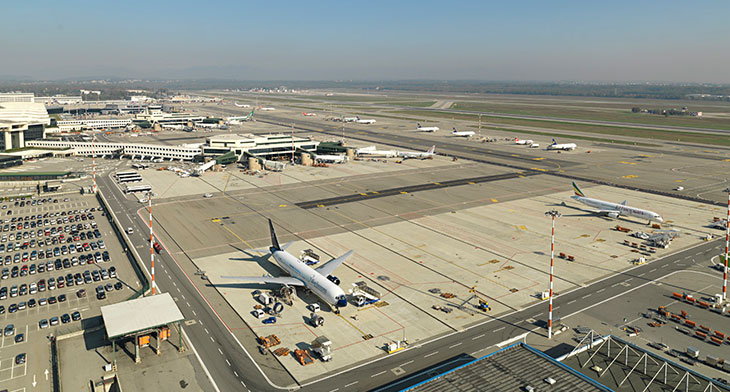


With airport leaders gathering in Istanbul this week for Airports Council International (ACI) Europe’s Annual Congress and General Assembly, Armando Brunini, the association’s President and CEO of SEA Milan Airports (which operates Malpensa and Linate airports) has called for European governments to enable aviation decarbonisation while preserving air connectivity.
Brunini has also called for the EU to protect and further reinforce the Single Aviation Market as he tackled a wide range of issues including SAF deployment and airports’ green energy needs to airport slots, air traffic management (ATM) reform and innovation and demand management measures.
Restating the airport industry’s support for the EU Green Deal and Fit for 55, he said: “We have been saying that decarbonisation is for airports the mother of all challenges, and therefore an absolute priority and we are not going to backtrack on that. Science is unequivocal about where our planet will end up without ambitious and effective climate action – and given that aviation’s emissions are particularly hard to abate, what is at stake for us is nothing less than our license to operate. So the Green Deal and Fit for 55 are the way forward.”
Last month the airports trade body joined a cross-sectorial coalition of more than 500 companies, local entities and NGOs calling for the Green Deal to be confirmed as a strategic prioirty in the next EU mandate.
Brunini stressed that the Green Deal must also deliver on its promise to be a growth engine and that decarbonisation policies must leave no airport and no community behind. “This means we must decarbonise aviation and at the same time preserve the unique soci0-economic benefits of our connectivity – and we must do so in ways that also ensure our competitiveness.”
He also called for additional policy interventions to ensure the availability of cost-competitive sustainable aviation fuels (SAF) thorough an ambitious EU SAF industrial policy encompassing systemic, concrete and effective financial support incentives and giving airports the neceessary tools to support SAF deployment.
Looking ahead to the future deployment of zero-emission aircraft and pointing to the Vision of the EU Industrial Alliance for Zero-Emission Aircraft (AZEA), which estimates that up to 68% of intra-EU flights will be operated by hydrogen and electric-powered aircraft by 2050, Brunini added that facilitating these flights on the ground will require the reconfiguration of energy supply, storage and distribution facilities. This will require major investments and access to considerable volumes of green energy. “It is essential these energy and financial needs start being factored in and addressed in energy and transport policies both at EU and national levels – in a fully coordinated way… something AZEA has identified as an essential prerequisite.
“Critically for airports, we must be provided with the financing or regulatory investment levels to support this deployment,” he said.
On the EU Single Aviation Market, Brunini said: “Along with ensuring cohesion and equality, our Single Aviation Market plays an essential role in supporting the competitive position of the EU globally. Safeguarding its integrity and reinforcing its effectiveness must be the other priority for aviation in the next EU mandate – alongside decarbonisation.”
Brunini identified the three critical issues for the Single Aviation Market to remain effective and competitive as: the revision of the 30-year-old Airport Slots Regulation; standing firm on the full freedom of airlines to provide services; and supporting innovation and resilience.
“We also need much more effective support at EU level for the deployment of new technologies, such as advanced screening systems and biometrics. The recent backtracking on the approval of new cabin bag screening equipment has laid bare the urgent need for a fully integrated EU testing and certification system for aviation security technologies. Similarly, the recommendation of the European Data Protection Board limiting the use of facial recognition solutions by airports and airlines – without even considering existing safeguards and without a proper risk/ benefit assessment – is very bad news.”





